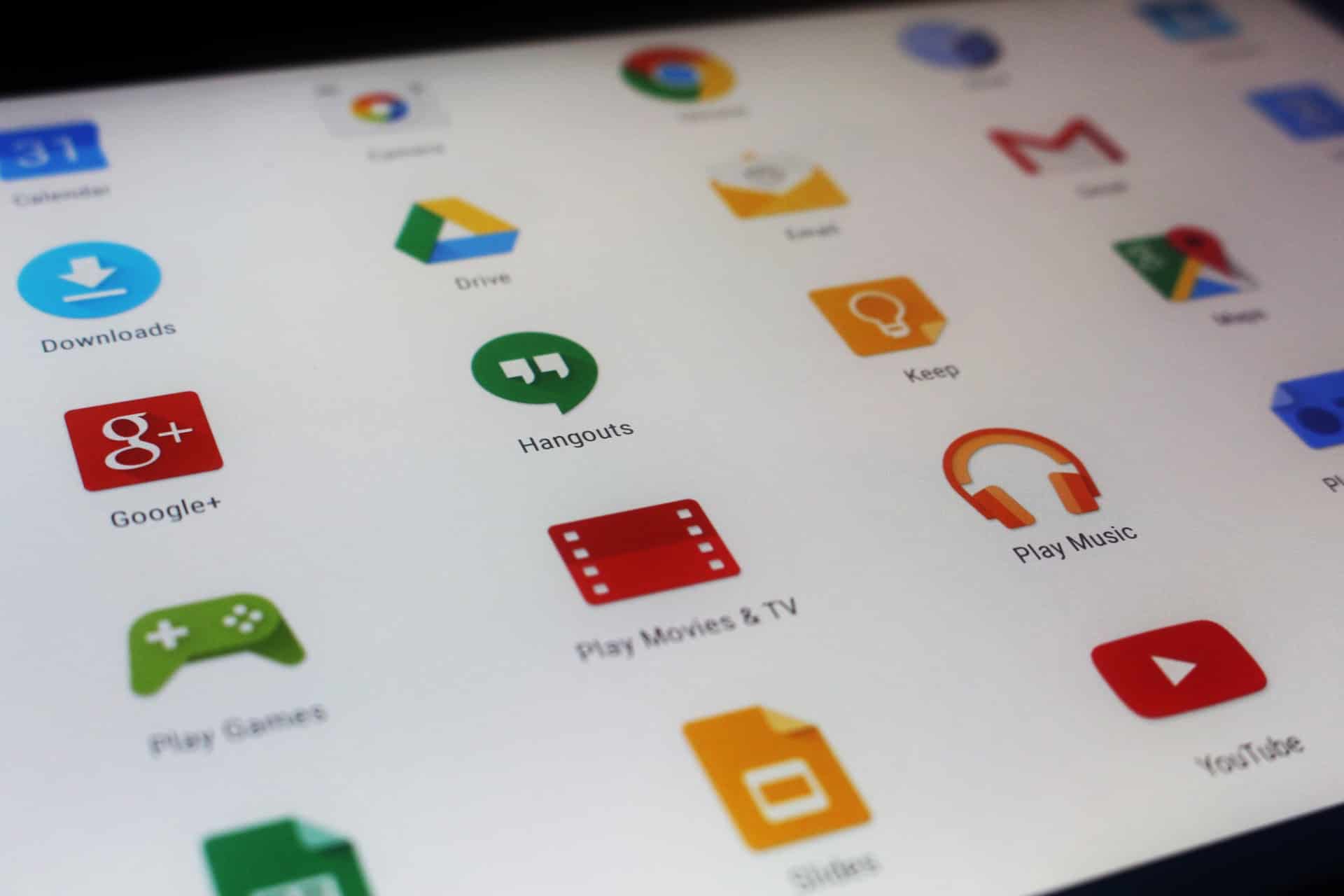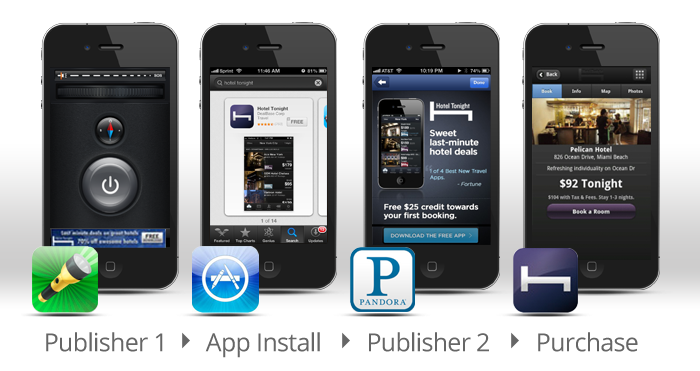
The unknowns of mobile marketing continue to be the biggest roadblocks for opening up big advertising budgets. How valuable is an ad impression on that tiny screen, or with “fat finger” mistakes, what about a click? What should my CTR look like? What is a new app install worth to me, and what is my ultimate ROI? Acquisition based advertising (CPA) has been solving for this on the web for years, giving advertisers an option to pay for real sales, leads or actions that drive revenue. Re-Engagement is one way to bring that CPA world specifically to mobile apps.
Re-Engagement: Introducing CPA to Mobile Apps
A couple weeks ago I wrote an article for iMedia on How to Monetize Mobile App Re-Engagement, which talks about giving publishers and ad networks credit for in-app engagements they are responsible for. As the young mobile advertising industry finds its footing, advertisers and ad networks alike have been operating off of an app install economy, but marketers are already turning toward revenue attributable events like in-app purchases as a baseline for user acquisition.
This should sound pretty familiar to all you CPA, affiliate, and performance focused marketers out there who have been driving sales and leads down the purchase funnel for a decade. You’ve found that if you prove to an advertiser that you can send real purchases, they are willing to cut you in on the profits.
Tracking mobile app re-engagement is the beginning of bringing the true performance based world to mobile apps. Instead of giving the publisher responsible for an app install the credit for all future events generated by that user, app owners want to compensate those publishers, affiliates, or networks partners responsible for re-engaging the customer and sending them back into a mobile app to commit a purchase or other valuable engagement.
For example, let’s say a user clicks on a banner ad for the latest hotel booking app. Perhaps they install the app but don’t make a hotel booking. Later, while listening to music in their living room the user engages with a different ad on Pandora and notices they can get a free $25 credit. The user then clicks the ad and returns to the mobile app, this time making a purchase decision.

As you might imagine, this is extremely valuable for mobile app developers that are advertising for a utility style app that often stays on a users’ device such as music, travel, sports, etc, but we’ve found it is just as exciting for mobile game developers where retargeting and re-engagement are the name of the game. Because mobile users interact with advertising in transit, between tasks, and in an infinite number of circumstances, it is actually very likely a user installs a game or app that they intend to play but never actually return to it. If a publisher can catch the users’ attention again and remind them to return, that publisher should be rewarded. Especially if this user goes on to become an avid user of the game.
Re-Engagement can also play a critical role in mobile offer walls where app advertisers can incentivize purchases and in-app events rather than just app installs. Regardless of the quality of user being incentivized, this offer wall can be an extremely profitable channel if they commit a purchase decision.
Mobile App CPA for the Win
As a performance marketer, it is pretty exciting to see so much adoption for Re-Engagement events. Mobile-specific marketing teams seem to be much more demanding than their counterparts on the desktop web, requiring results driven data to support their campaigns. These marketers have skipped right over CPM based campaigns which ruled the web for a long time and are now expecting much more beyond clicks on ads as a measure of success. This makes me think that affiliate marketing and performance marketing has many of the answers to those mobile unknowns and thus a very bright future ahead.
Author
A digital marketer by background, Peter is the former CEO of TUNE, the enterprise platform for partner marketing. In 2018, he sold TUNE’s mobile measurement product to Branch, unifying measurement and user experience. He led TUNE’s efforts to bring better management technology and automation to marketing partnerships, across affiliates, influencers, networks, and business development relationships. Follow @peterhamilton



Thrills! One more way for advertisers to annoy the hell out of us. This article convinces me I do not need apps or the machines they run on. I’m already pissed off enough that half or more of my bandwidth is eaten up by ads that slow down the loading of the things I want to see. I’m tired of having to wait for ads to load before I can even do something as simple as read a news article or my email. If I could, I’d send bills to each spammer for the bandwidth and time they take out of my day pushing products and services I do not want, cannot use, and cannot afford. As far as I’m concerned, spam is nothing but a subtle Denial of Service attack. I am sick of paying people to advertise to me. And, what makes them think they can sell me anything by annoying the fuck out of me?!!! I have a long list of companies I will not buy from… and it continues to grow.
I’m sorry to hear you’ve had so many poor advertising experiences. The simple truth however is that much of the content you want is only made possible by advertising that supports it. Without advertising many of the games, products, tv shows, and newspapers of the world simply would not exist.
I agree that marketers need to get better at providing relevant advertising that provides value to consumers, and I believe this re-engagement ideology for promoting mobile apps makes sure the ads that created a favorable user experience are highly compensated. Over time, providing this the right incentives for good marketing should slowly continue to improve user experience.
[…] Re-Engagement Brings CPA to Mobile Apps, HasOffers […]
[…] Re-Engagement Brings CPA to Mobile Apps, HasOffers […]
Peter- what pub do you recommend for remarketing? Flurry? Any others?
That depends Matt. Solutions like Flurry, Apsalar, Playnomics, and even Millennial certainly provide remarketing services for specifically targeting those who previously installed your app. However, the idea of re-engagement and giving credit to in-app purchases provides a different benefit that is applicable to any number of publishers including those providers. You can insure a return on investment with incentivized traffic by compensating them for the sales they generate rather than the installs they provide, or you can make sure you’re properly rewarding those who provide valuable in-app actions but to users who happen to already have the app installed.
[…] challenges facing the overall performance marketing space; the opportunities such as mobile; how mobile is being used to further engage consumers; the issue of consumer privacy; the status of the Do Not Track regulation; education in the […]
[…] Brings CPA to Mobile Apps http://www.hasoffers.com/blog/re-engagement-brings-cpa-mobile-apps/ … via @HasOffers Ritwittato da […]